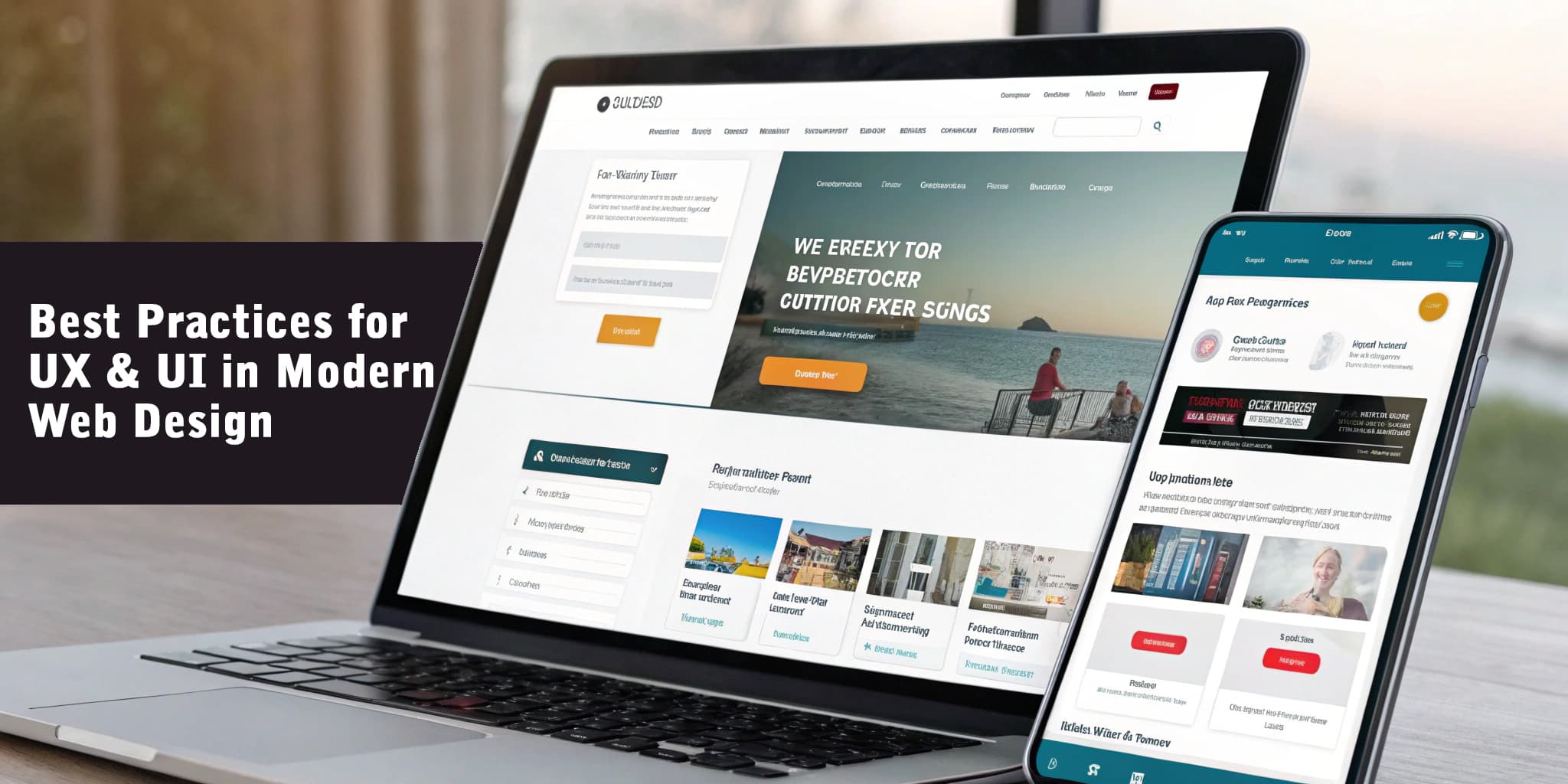📍 Introduction
User Experience (UX) and User Interface (UI) are essential components of modern web design. A well-designed website not only looks great but also provides a seamless experience for users, ensuring they stay engaged and convert. This guide explores the role of UX & UI in web design, their key differences, and best practices for crafting high-performing websites.
1️⃣ What is UX & UI Design?
While UX and UI work together, they serve different purposes in web design.
🔹 UX (User Experience) Design:
✔ Focuses on how users interact with a website.
✔ Ensures navigation is intuitive and user-friendly.
✔ Aims to improve overall satisfaction and conversions.
🔹 UI (User Interface) Design:
✔ Deals with the visual and interactive elements of a website.
✔ Enhances usability through well-designed layouts, buttons, and typography.
✔ Strengthens brand identity and aesthetics.
📌 Example:A website designed with great UX/UI will have logical navigation and quick load times, while excellent UI ensures it’s visually appealing and easy to use.
2️⃣ Why UX & UI Matter in Web Design
📊 Key Benefits of Good UX & UI:
✔ Increases user engagement– Visitors stay longer and interact more.
✔ Boosts conversion rates– A well-structured site leads to more sign-ups and sales.
✔ Improves SEO rankings– Search engines favor sites with great usability and fast load speeds.
✔ Enhances brand credibility– A polished website builds trust and authority.
📌 Real-World Data:According to Forrester Research, a well-designed user interface can increase conversion rates by up to 200%, while an improved UX design can boost conversions by 400%.

3️⃣ Best Practices for UX & UI in Modern Web Design
🎯 1. Mobile-First Design
✔ Ensure your site is fully responsiveacross all devices.
✔ Prioritise touch-friendly navigationfor mobile users.
✔ Optimise images and videos for faster loading speeds.
📌 **Google’s research found that 53% of mobile users abandon a site if it takes longer than 3 seconds to load.
🎯 2. Intuitive Navigation & Layout
✔ Use clear menus and logical page structures.
✔ Reduce cognitive load by keeping important information accessible.
✔ Follow the 3-click rule– users should reach any page within 3 clicks.
🎯 3. Engaging & Accessible Visual Design
✔ Choose contrasting coloursfor readability and accessibility.
✔ Use white space effectivelyto avoid cluttered layouts.
✔ Implement consistent fonts and branding elements.
🎯 4. Fast Loading Speeds & Performance Optimisation
✔ Compress images and use lazy loadingtechniques.
✔ Minify CSS, JavaScript, and HTML for faster page speed.
✔ Leverage CDNs (Content Delivery Networks)to enhance global performance.
📌 Real-World Data:Websites that load in under 2 secondshave an average bounce rate of 9%, while sites that take 5+ secondsto load see a 38% bounce rate.
🎯 5. User-Centric Testing & Feedback
✔ Conduct A/B testingto determine what resonates best with users.
✔ Use heatmaps and analyticsto track user behavior.
✔ Regularly update and improve the UI based on real user feedback.
🚀 Conclusion
UX & UI play a vital role in creating high-performing, user-friendly websites. By focusing on mobile-first design, intuitive navigation, fast loading speeds, and accessibility, businesses can enhance user engagement, boost conversions, and improve SEO rankings.
📌 Next Steps:
✅ Conduct a UX/UI audit to identify areas for improvement.
✅ Optimise site speed, mobile usability, and visual design.
✅ Need expert help? Contact our Web Design Aucklandteam today!

